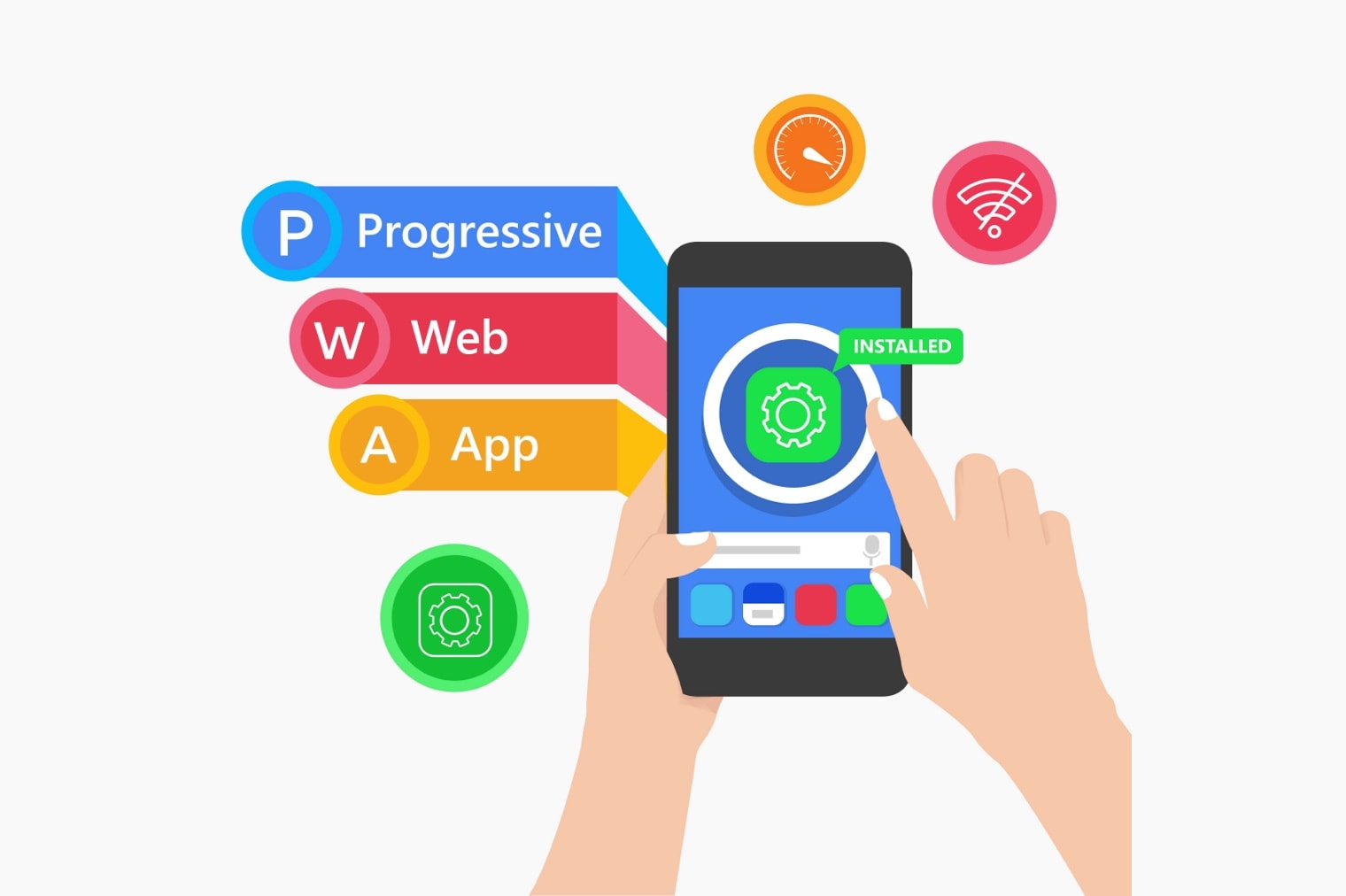What Are Progressive Web Apps?
Progressive web apps have emerged as a powerful tool to engage your audience. Learn about their nuances, advantages, and drawbacks to decide whether they should become part of your online presence as well.

Oops! We could not locate your form.
Progressive web apps have emerged as a powerful tool to engage your audience. Learn about their nuances, advantages, and drawbacks to decide whether they should become part of your online presence as well.

How do you best represent your business online and engage your users in the process? It’s a question as old as the world wide web, but its answers continue to change.
In recent years, the preponderance of mobile devices has led to the rise of responsive web design and mobile apps. But there’s a new contender in the ring: progressive web apps (PWAs).
At their best, PWAs can enhance your website with functionality that was formerly reserved for native mobile apps. But of course, they also come with their own nuances that are important to keep in mind. Join us for a deep dive into the world of PWAs, and how they might help your business attract and engage more users across devices.
Progressive web apps are a way to bring mobile app-like content to browsers, making it accessible across devices. They’re a natural extension of web applications, adding increased functionality that was formerly reserved for native mobile apps to this browser-based experience.
Think of a PWA as an extension of your website that looks and acts like a mobile app you would otherwise download from the App Store. It’s still built the same way as your website, using the same HTML, JavaScript, and CSS programming, but allows for additional engagement for your users that ultimately builds a better experience.
Progressive web apps are not necessarily new, having been around for at least six years. But they continue to gain popularity largely because of a few core advantages:
Any device with a web browser allows access to PWAs, as long as it’s updated. That also cuts down on development times, since you’ll only need to build a single app for all potential user access points.
Especially compared to native mobile apps, PWAs can load almost instantly based on pre-cached information. The ‘progressive’ in PWA means that these apps can seamlessly scale up or down depending on the device used.
As long as your users install the app, it will continue to work with bad or no internet connection. Especially publishers who don’t rely on real-time information like online ordering can offer a more reliable experience as a result.
Because they’re web-based, progressive web apps can appear on search results just like any website would. And yet, they can still be available on native app stores like Apple and Android, maximising visibility for your business.
The web-based nature of a PWA also allows you to link to them more easily. Promotional links from your website, social media, or email lead to a much smoother user experience than a native app would allow
If you make your PWA available for download, its functionality increases further. Now, you can build in push notifications, keyboard shortcuts, and other features formerly reserved for native mobile apps.
Of course, all of these benefits still depend on how your PWA is built. A poorly-built progressive web app can still perform slowly or be accessible only with a strong internet connection.
The versatility of this content delivery mechanism means businesses across industries can use progressive web apps to engage their users and drive revenue.
Consider just some of the most popular use cases we’ve seen for PWAs in the wild in recent months:
Of course, these are just some examples of PWAs and how they can be used to add to your existing online experience for core audiences. The interactive nature of this medium allows for a wide range of use cases, though a few limitations are important to keep in mind as well.
PWAs are beneficial for many businesses, and in many contexts. But it’s still important to keep their drawbacks in mind as you look to develop and improve your online user experience.
To start, their lean nature means progressive web apps are not inherently as powerful or integrated into your mobile users’ devices as native apps would be. Any connections with other apps, like the phone camera, are difficult to build because those connectors change depending on the device used.
In addition, it’s important to keep in mind that PWAs are not quite omnichannel-compatible. Although some workarounds exist, they’re still not supported by Firefox, which continues to be a popular browser. As such, they can’t presently fully replace your website, but work best to add to the overall experience in the right context.
Finally, they can complicate things for your users if you already have a strong native mobile app that’s integrated into your online brand ecosystem. In this case, introducing a progressive web app as another layer of interaction with your business can confuse your audience, who will no longer be sure where to turn for the specific tasks they want to accomplish.
Despite some drawbacks, PWAs represent the best of both worlds between a web-based presence and native mobile apps. Their versatility, relative ease of development, and lean nature can make them a powerful tool at your disposal when looking to engage and convert your audience.
Of course, they do remain part of your larger online presence, and always need to be considered as part of your broader network of channels, including your website.
Explore our blog or contact us for more insights and exploration into the digital ecosystem, and how you can leverage your online presence to drive your business forward.


WordPress Core version 6.5 was released on April 2nd. So let's take a quick look at some of the main changes it brings with it.
 Richard Ramirez
Richard Ramirez

WordPress Core version 6.4 is released today. So let's take a quick look at some of the main changes it brings with it.
 Richard Ramirez
Richard Ramirez

If you're looking for the right contact form solution for your WordPress or WooCommerce website, there are certainly no shortage of options on the market.
 Richard Ramirez
Richard Ramirez